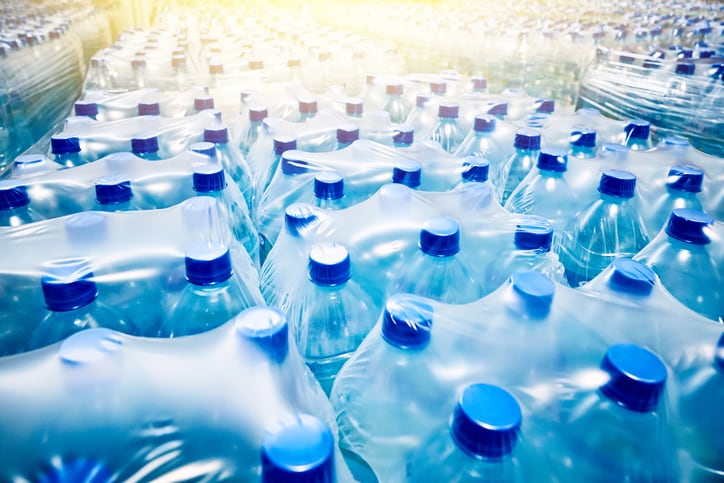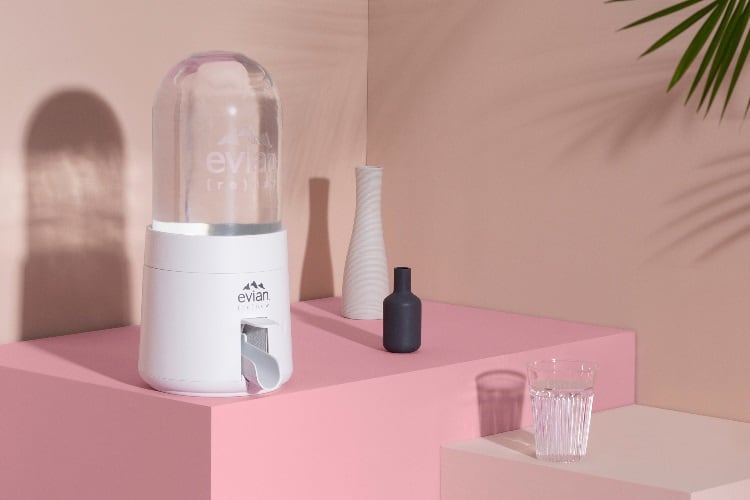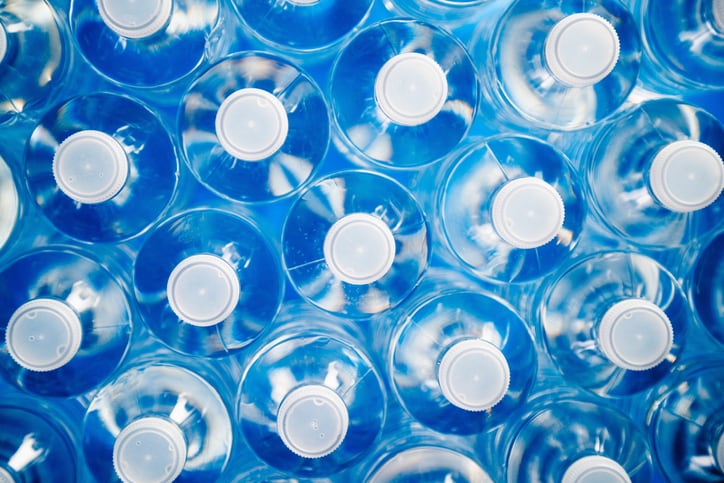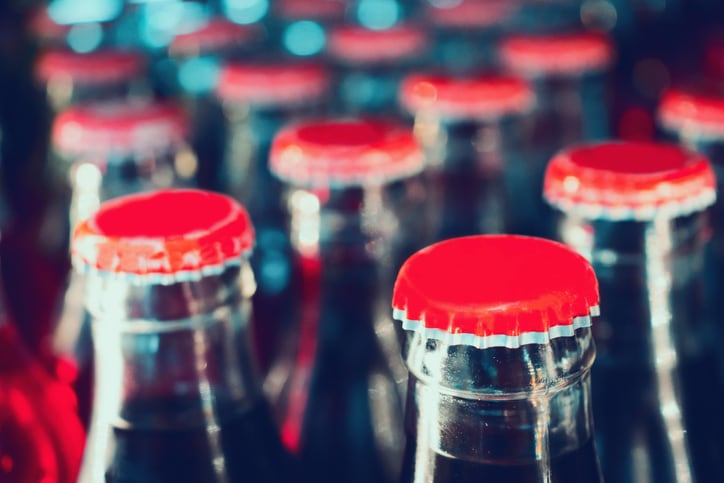Data from the Beverage Marketing Corporation (BMC) shows that 69% of the recent growth in bottled water consumption has come from consumers purchasing fewer carbonated soft drinks and fruit drinks.
IBWA said that bottled water’s wholesale dollar sales also grew by 7.3% in 2018, reaching $18.4bn. Per capita consumption rose 4.3% to 42.3 gallons while soda and fruit drink consumption both declined in 2018.
The IBWA estimates that by consuming nearly 14 billion gallons of bottled water in 2018, up 4.9% from 2017, Americans may have saved approximately 470 billion calories and 73 million pounds of plastic (compared to if they had consumed other packaged beverages).
Jill Culora, IBWA’s VP of communications, said “The demand for water is evident, as bottled water continues to be America’s most popular packaged beverage, by volume.”
“People are choosing to drink fewer calories and making that healthy choice [that] has the added benefit of helping the environment because not only are bottled water containers 100% recyclable (including the cap) but they also contain much less plastic than soda and other packaged beverages.”
Don't forget the caps
In 16.9oz containers, bottled water uses about 59% less PET plastic than other beverages (9.89g vs 23.9g), according to IBWA. They said that soft drinks and other high-sugar beverages need thicker plastic containers as a result of their carbonation and bottling processes.
IBWA reiterated that bottled water packaging is now 100% recyclable, including the caps. It cited a 2017 PET bale analysis study by the National Association for PET Container Resources that said “bottled water is the most recycled product in curbside recycling systems” at 53.9%, while soda bottles were 20.4%.
“We are hearing from PET plastic recyclers that because of the consumption shift from soda to bottled water, their facilities need to recycle twice as many water bottles to get the same amount of resin they would have from soda bottles,” Culora said.
Of bottled water companies that use recycled PET (rPET), their average rPET content increased from 3.3% to 18.2% between 2008 and 2017, according to BMC. But in order to ensure there is enough rPET in rotation for use by bottled water companies, more people need to recycle more consistently.
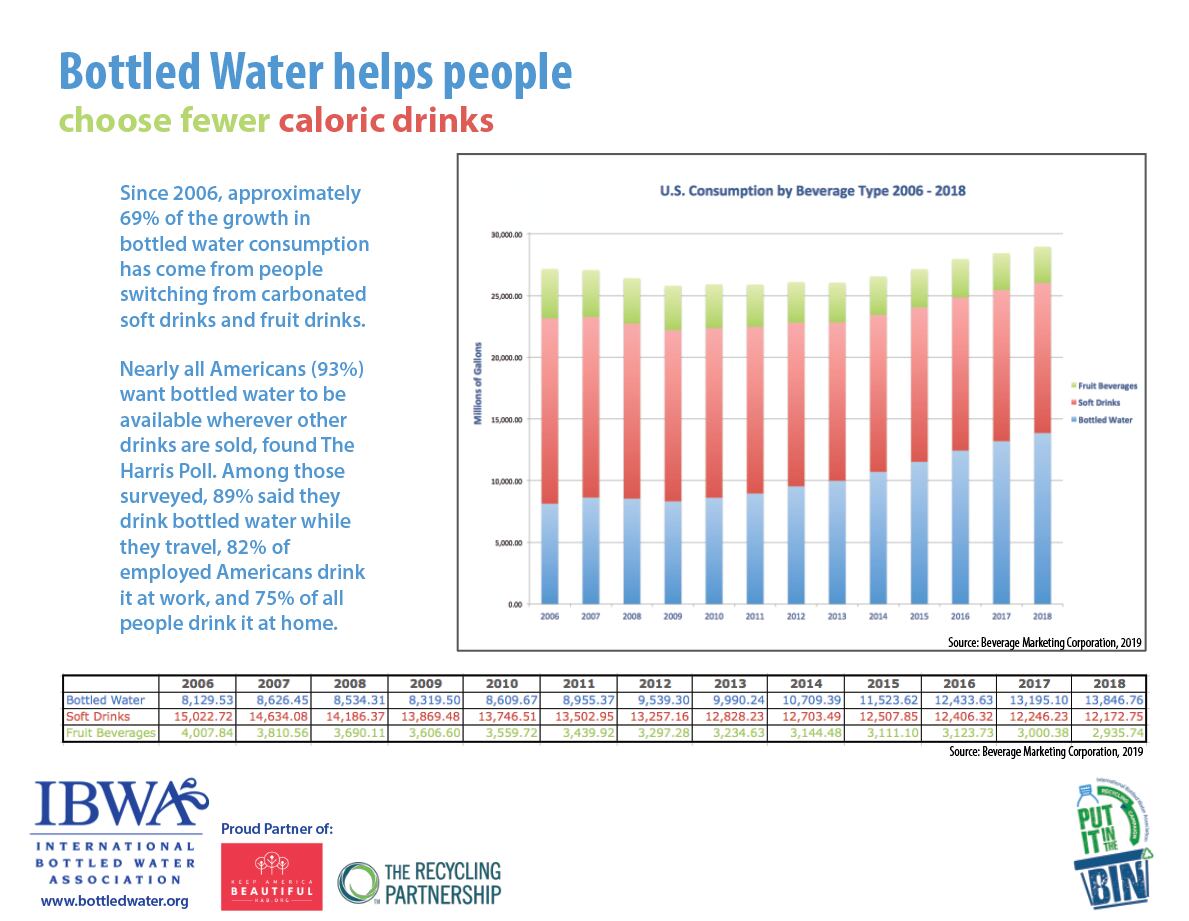
“We’re seeing a significant shift to healthy hydration, which is really good news for public health. And the bottled water industry is using much less plastic resin in its packaging, which is good for the environment. But taking it a step further by recapturing this plastic for use in new bottles requires improving recycling rates,” Culora said.
Many bottled water companies are now using rPET packaging, offering products in containers that are made of 50%, 75%, or even 100% rPET, according to IBWA said.
Tap water not a threat
IBWA also said that tap water is less of a threat to bottled water than most people think. Much of its competition lies with other packaged drinks, like soft drinks, juices and teas, rather than tap water.
“It’s incorrect to think that most people drink bottled water instead of tap water. In reality, most bottled water drinkers (76%) drink both tap water and bottled water,” Culora said.
In 2018, Zenith Global projected that bottled water would overtake all other soft drinks around the world. Consumption grew 92% between 2007-2017 worldwide, and Zenith called it “healthy, convenient and local” and also ‘affordably priced’ as reason for its popularity growth.
Its position as an ‘on-the-go’ beverage has contributed to its success, as 93% of Americans reported that they want it to be available everywhere drinks are sold, preferring it over coffee and soft drinks. Sparkling, carbonated products continue to lead the overall category, while premium brands like Fiji and Smartwater outsell spring water.

